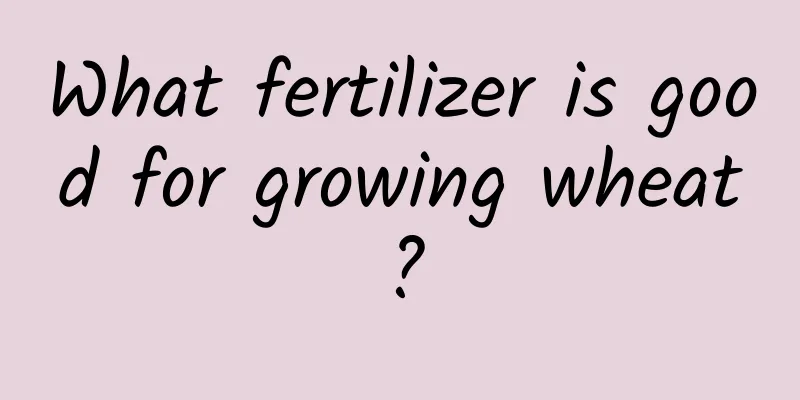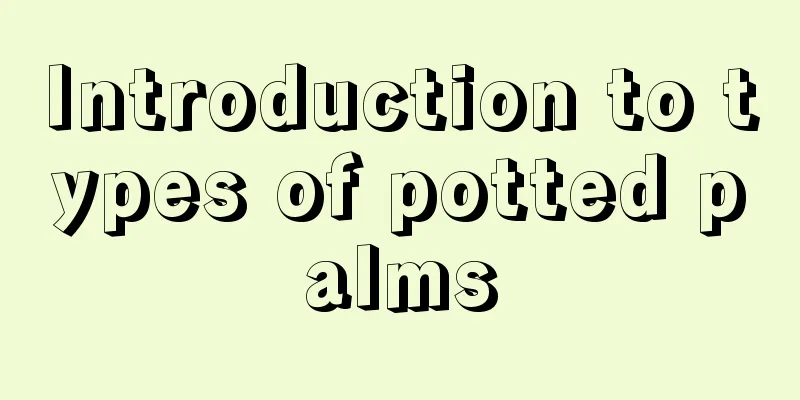What fertilizer is good for growing wheat?

Fertilizer for growing wheatPlanting wheat requires the application of nitrogen, phosphorus and potassium fertilizers, but the fertilizers required in different growth periods are different. Base fertilizer should be added in advance before sowing to ensure the nutrient needs of the seedling stage. Nitrogen fertilizer is needed after the wheat seedlings turn green, potassium fertilizer is needed during jointing, and a large amount of phosphorus fertilizer is needed from the beginning of heading. Nitrogen fertilizer must be controlled in the later stage to avoid reducing yield. Wheat base fertilizerWhen planting wheat, a compound fertilizer with medium nitrogen, high phosphorus and low potassium can be used as base fertilizer. This is determined according to the growth needs of the plant. In the early stage, more phosphorus fertilizer and less nitrogen and potassium are needed, so high-phosphorus fertilizer is applied as base fertilizer. Nitrogen fertilizer and potassium fertilizer can be supplemented during the jointing period. Wheat topdressingWheat grows well because it is planted in a plot with sufficient fertility. A small amount of topdressing can be applied. During the jointing stage, high-nitrogen compound fertilizer can be applied in combination with watering to reduce tillering, make the stems strong, and enhance the ability to resist lodging. Fertilizer for wheat growthDuring the wheat growth period, fertilization can be combined with watering, applying 15 to 20 kilograms of high-nitrogen compound fertilizer or nitrogen fertilizer per mu to increase effective tillering and improve yield. The correct way to fertilize wheatBefore sowing wheat, base fertilizer can be applied when tilling the soil. For arid plots, fertilizer can be applied deeply to the bottom of the plow and covered with soil. For plots with heavy soil, fertilizer can be spread first and then plowed to turn the fertilizer into the soil. Compound fertilizer can be applied to high-yield fields. If conditions permit, it can be mixed with farmyard manure for better results. Precautions for wheat fertilizationDo not apply fertilizer blindly during the wheat growth period. If the soil nutrient content and wheat yield level are not considered when determining the amount of fertilizer to be applied, and too much fertilizer, especially nitrogen fertilizer, is applied, it will cause an increase in ineffective tillering, stem lodging, decreased cold and disease resistance, easy frostbite in winter, and aggravation of diseases and pests in the middle and late stages, affecting the yield. |
<<: What fertilizer is good for cowpea topdressing?
>>: When is the best time to prune wolfberries?
Recommend
When is the best time to plant garlic in the north?
Garlic, also known as garlic, is a common condime...
The difference between creeping vine and sedum
1. Different varieties Sedum is a perennial succu...
Chlorophytum disease and pest control
Disease 1: Root rot Disease pattern It mainly har...
Silver Queen breeding methods and precautions
Best growing soil Silver Queen is mostly potted, ...
How to propagate Superbus
Classification of Superbus propagation methods Th...
What kind of pot is best for Tang Yin
What kind of pot is best for growing Tangyin Tang...
Can Jiyulu be grown through leaf cuttings?
1. Is it feasible and how to operate it First of ...
Can Kirin flower be transplanted in autumn? Transplantation method
Can the Kirin flower be transplanted in autumn? T...
Diseases and Pests of Phlox and Their Control
Diseases of Phlox Anthracnose of Phlox The most c...
The reason why the leaves of Spathiphyllum turn black
1. Too much water The leaves of Spathiphyllum tur...
The leaves are turning yellow, is it because of lack of fertilizer?
When caring for plants and flowers , even if you ...
How to maintain saffron and what to pay attention to
1. Loosen the soil Saffron likes to grow in loose...
The main value of banana
Edible value Like bananas, plantains can be eaten...
Cultivation methods and precautions of Christmas cactus
1. Water During its vigorous growth stage, Christ...
Pests and Diseases of Photinia fraseri and Their Control
Gray mold disease of Photinia fraseri and its con...









